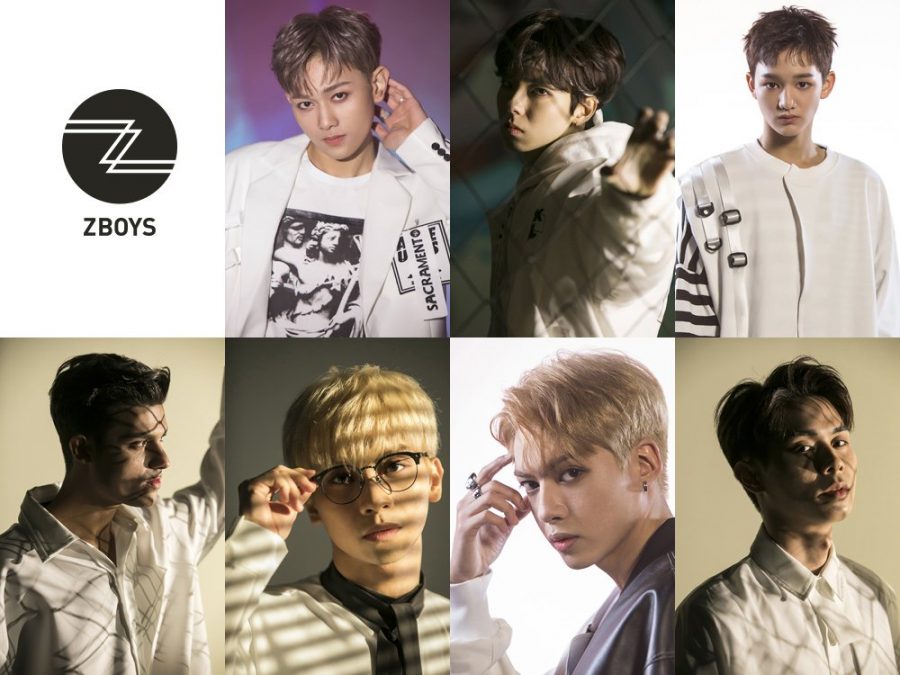It is undeniable that K-Pop has taken enormous strides on the global stage in the past two years. From BTS selling out their world tours in minutes to Got7 being interviewed by the CEO of Twitter, people are starting to realize the worldwide appeal of K-pop. Because of this, people are also learning about the diversity within Asia and appreciating different cultures.
Yet on February 21, 2019, two groups debuted, and they have thrown a new challenge on what people perceive about K-pop and Asian culture. These groups are called Z Girls and Z Boys, formed under Z-Pop Dream, a subset of Zenith Media Contents. But here’s the catch—none of these group members are Korean.
 Both 7 member groups have people from Japan, the Philippines, Indonesia, Vietnam, India, Taiwan, and Thailand. The Z Boys debut song is called “No Limit” and the Z Girls debut song is called “What You Waiting For”. Both songs have a fun beat, positive message, and crisp choreography. Interestingly however, both songs are completely in English.
Both 7 member groups have people from Japan, the Philippines, Indonesia, Vietnam, India, Taiwan, and Thailand. The Z Boys debut song is called “No Limit” and the Z Girls debut song is called “What You Waiting For”. Both songs have a fun beat, positive message, and crisp choreography. Interestingly however, both songs are completely in English.
Jun Kang, co-founder of Zenith Media Contents and Z-Pop Dream (which is based in Seoul) shares his specific goals for his companies. On the Zenith Media Contents Introduction page he says, “We seek outstanding and talented future-oriented people, not biased against race, age, sex, and appearance.”
On the Z-Pop Dream page, their mission statement reads, “The Z-POP team now seeks to replicate the success of K-POP and create global music stars from multiple countries by bringing together the KPOP professionals and voting power of the fans!”
The mission statement promotes talent without discrimination, which is clearly a positive ambition. What stands out though is the phrase, “to replicate the success of K-pop”.
This begs the question—what is “Z-pop”, and how does it differ from K-pop?
Before exploring the difference between Z-Pop and K-pop, it may be helpful to establish their similarities. First, Z-pop music videos are produced in a similar fashion to K-pop ones. The angled camera movements, fashion, and choreography all reflect the K-pop style. But this should make sense, given that Z-pop Dream’s producers also worked with some of the biggest K-pop groups.
Second, they are similar in their presentation. On Z-Pop Dream’s Youtube channel, there are videos of the groups doing activities—from busking in Hongdae to cooking Korean food. Each group has the traditional Korean-bow greeting that they say at the beginning of most of their videos. ZBoys say, “Gen Z- Hello, we are ZBoys,” while ZGirls say, “What you waiting for- Hello, we are ZGirls!” Overall, their Youtube videos present a similar atmosphere to a K-pop group activity, both in the actual video structure and content.
Third, the Z-Pop groups follow the same group hierarchy as a K-pop group. Each group has the designated leader and maknae, visual, etc. and these relationships are evidenced by their interactions in their videos. For example, in one of the ZBoys’ videos they get each other gifts to celebrate their debut, and they call the youngest “maknae” almost the whole time.
Despite these similarities, there are some clear differences between Z-Pop and K-pop. The most obvious difference is that none of the Z-Pop members are Korean. In their Youtube videos, the members share stories about their culture and discuss cultural differences in a refreshingly open-minded way. Occasionally they speak in their native languages, but they primarily speak in English.
Because Z-Pop is not just Korean, it also gives the groups a different atmosphere. Because the groups are so global, it seems to make them more approachable. Sure they are nervous about their debut which not everyone goes through in life. But they also are trying to learn Korean and trying to have healthy cross-cultural friendships. Given the diversity in the world, learning another language and coming across someone from another culture is likely to happen.
Thus, maybe this is the goal of Z-Pop Dream. Maybe it does not matter whether or not it is like K-pop—maybe all that matters is the connection it brings to the audience. Yes, the company is based in Seoul, and yes their Youtube videos have Korean subtitles, yes their videos follow the K-Pop style, but it can mean more than that.
By presenting such global groups, it can remind the world how truly diverse it is. Showing videos of the groups having fun together even though they are from different countries sends such a positive message to people. Not only can people feel represented and appreciated by an individual member, but they can also see the joy of cross-cultural friendships. Hopefully, Z-Pop Dream is here to stay to show the world the greatness of global outreach.
What do you think of this new Z-Pop Dream global project? Do you think it fits in the world of K-Pop? Feel free to leave your comments on our 24hr K-Pop page below!
this post was written by our guest blogger, Sarah Ramsey.

